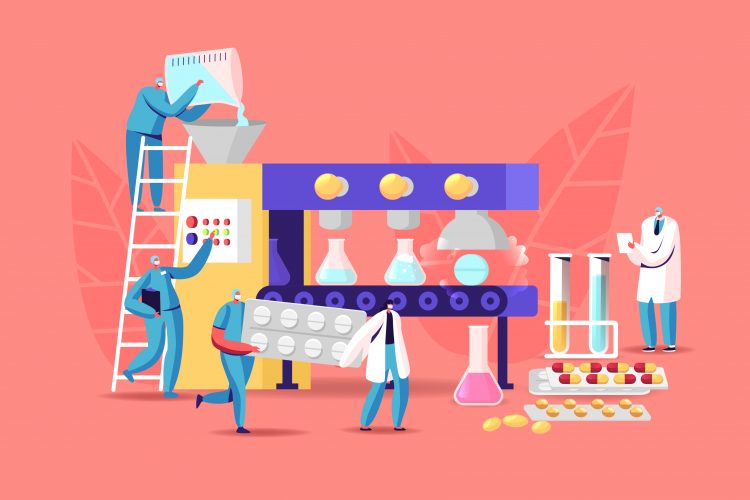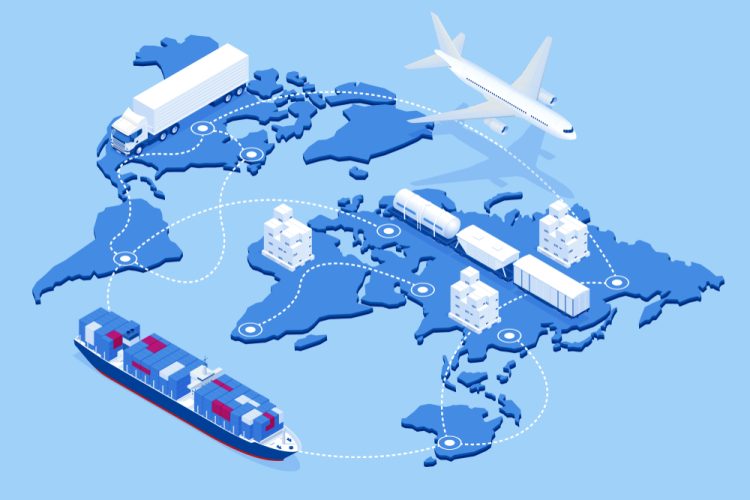Is localisation the answer for pharmaceutical supply chain resilience?
Posted: 16 September 2022 | Hannah Balfour (European Pharmaceutical Review) | No comments yet
Highlighting the findings of a recent supply chain report, EPR’s Hannah Balfour discusses measures pharmaceutical suppliers may adopt to establish demand- and crisis-resistant supply chains. Commenting on the findings, Ernst & Young Global Limited colleagues Famke Krumbmüller, Derron Stark and Olaf Zweig elaborate on the impact and lessons learned through the COVID-19 pandemic.


We have reported several times on supply chain resilience since the start of the COVID-19 pandemic,1-3 as the world experienced unprecedented lockdowns and supply disruptions, with interruptions to manufacturing as well as both air transportation and shipping routes. Since the developed regions of the world started to get COVID-19 under control, focus on this matter has only grown – particularly in the pharmaceutical sector, which played a critical role in curbing the devastation caused by the pandemic. But how will this drive for resilience shape the future of pharmaceutical supply chains?
Promoting supply chain localisation
Famke Krumbmüller, Ernst & Young Global Limited (EY) EMEIA Leader, Geostrategic Business Group, explained that a critical outcome of the pandemic for the sector is that “from the political or regulatory point of view, through COVID-19 the pharma industry and its supply chains became what we would call a ‘strategic sector’, joining more traditional examples such as the technology and defence sectors.” The pandemic attracted the attention of regulators and policy makers to the critical strategic importance of pharma supply chains and “now that this attention has come, we expect more and more government intervention in pharmaceutical supply chains going forwards,” she added.
The shortages experienced by various industries during the pandemic highlighted our dependency on certain areas of the world for supply – for pharma, this was emphasised when logistical challenges in India and China, as well as export restrictions, caused problems in the active pharmaceutical ingredient (API) and generics supply systems. According to Krumbmüller, underpinned by the challenges of COVID-19 and rising geopolitical tensions, a trend has emerged towards reducing dependence on others and thus “the direction the world is heading over the next five to 10 years is more regionalisation”.
But how suitable is localisation for the pharmaceutical industry’s vast and complex supply chains?
Globalised thinking: establishing a hybrid model
“I think one of the challenges is that though regulatory and governmental bodies think localisation will make the difference, and several initiatives have been announced to drive this, pharmaceuticals have very complex supply chains,” commented Olaf Zweig, EY Partner, Life Sciences.


According to a report recently published by EY,4 localisation could take a wide variety of forms, ranging from simply ensuring local stockpiles of finished goods, to the far more ambitious prospect of bringing a whole end-to-end manufacturing process into a single region or nation.
The required investment to localise would also vary significantly depending on which steps of manufacturing are concerned, wrote the authors. “For example, a pharma company could, relatively easily, localise secondary packaging… [However] if companies seek to localise the earlier stages of the manufacturing process… the complexity would rise correspondingly, with increased needs for complex raw materials, skilled labour and higher capital outlay to build sites for higher-technology manufacturing,” wrote the authors.4 The researchers suggest that localising API manufacturing would be the most challenging, given the high levels of investment and technical competency required.
The report also remarked that, in practice, the implications of localisation need to be considered relative to other strategies for enhancing supply chain resilience, noting that pharma companies are already adopting alternative strategies such as multi-sourcing and leveraging local contract development and manufacturing organisations (CDMOs) to enhance their supply chains.4
Moreover, Derron Stark, EY Principal, Strategy and Transactions, revealed that depending on the type of product – small molecule versus biologic – the ability to localise supply and thus the overall supply chain strategy differs. “Small molecules, and APIs in particular, are viewed as commodity technologies and are more likely to be centralised and less likely to be moved from their current supply source to a secondary or localised supply source. Whereas biologics, and we studied allogeneic technologies, are more likely to use localisation as a strategy to improve resilience,” explained Stark.
from the political or regulatory point of view, through COVID-19 the pharma industry and its supply chains became what we would call a ‘strategic sector’, joining more traditional examples such as the technology and defence sectors”
The report revealed that while the industry may move towards localisation to some extent, “ultimately, some combination of localisation and other strategies may provide the most satisfactory answer for all stakeholders”.4
The authors describe the “hub and spoke model” as a potential solution to balance both globalised and localised operations. Within such a system, the manufacturing of a product – either end-to-end or in part – can be localised; while a full-scale manufacturing site acts as a global hub, smaller-scale supply chain operations can be executed locally at spokes.4
According to EY, the hub and spoke system is a cost-efficient model for localising manufacturing; it both increases supply chain agility while negating the need to spend on a full-scale local site. Keeping the equipment in the spoke sites to a minimum can also reduce cost. Fundamentally, they write, it offers “the benefits of localisation strategies while mitigating some of the risks and costs of these strategies”.4
Alternative supply strategies
The collaborative key
Outsourcing activities to local contract development and manufacturing organisations (CDMOs) is just one collaborative solution to localising aspects of supply. Within the hub and spoke model, the report offers several, perhaps more controversial, collaborative options that could deliver the desired supply chain flexibility while mitigating the risks for organisations.
Such solutions include the opportunity for joint warehousing, where companies share warehousing capacity for raw materials and consumables; not only does this provide a localised source, but the co-location of supplies would enable easier sharing of materials between companies where necessary in the face of disruptions.4 Moreover, sharing large-scale manufacturing facilities would enable companies to reduce their expenditure and risk while increasing agility by allowing access to a full-scale local site.
Supply chain visibility, regulatory adjustment and more


It is important to note that while some industries stalled in the face of COVID-19, the innovative pharmaceutical sector was reasonably resilient, experiencing minimal supply shortages, according to Stark. “This industry’s service levels stayed at pre-pandemic levels and, in some cases, actually improved because of the increased focus and application of more resources and manpower to ensure that products got to market,” he highlighted.
However, Stark noted that the pandemic emphasised certain weaknesses within the industry, such as in its supply chain visibility and subsequent ability to cope with large fluctuations in demand. “As a result, supply chain visibility, digitalisation and automation have risen to the top of innovative pharma’s agenda. They were on the agenda prior to the pandemic for decades, but companies have doubled down on their investments to accelerate getting connectivity and visibility to their raw material and component suppliers, as well as to customers, to be able to see and respond to their demand signals better, and to have some capability with demand sensing.”
The report asserts that improving end-to-end supply chain visibility through the development of integrated digital platforms would enable data from manufacturers, suppliers and wholesalers to be linked, providing insight into the real-time supply chain situation and enabling more efficient management and intervention.4
The authors also suggest two potential regulatory adjustments that could enhance resilience. They describe an operating model that could expedite changes to manufacturing and supply for “companies recognised as trusted and competent”.4 Under the “regulatory notification principle”, such companies would be considered compliant as soon as they provide the necessary change notification information to regulators, allowing organisations to implement changes while they work to supply full change documentation and stability data later. Essentially, trusted companies would be able to make changes without the need for a pre-approval inspection or data review and approval, thereby increasing agility and reducing potential downtimes.4
Small molecules, and APIs in particular, are viewed as commodity technologies and are more likely to be centralised… Whereas biologics, and we studied allogeneic technologies, are more likely to use localisation as a strategy to improve resilience”
They also suggest that by making regulatory filings supplier agnostic, substitute sources could be more easily utilised.4 Stark explained that many companies are already multi-sourcing both raw materials, components, etc, and sites for API production and formulation. Qualifying secondary sources, he noted, will be “one of the most impactful measures, and one that companies have already started to take,” adding that “many companies identified that cross registration of facilities, where finished product sites are not just registered to service one region or market, was a critical component to their ability to supply during the pandemic.”
“These are just two examples of how this collaboration between the regulatory bodies and the pharmaceutical industry can be used to increase resilience and build future supply chains that are even more agile,” stated Zweig.
The authors acknowledge that the potential implications of each of the alternative approaches are wide-ranging and challenging to predict; however, they assert that, in comparison to end-to-end localisation, such methods “require comparatively low investment to realise”.
Future thinking
Zweig noted that, since every company operates differently, there is likely not a single model or strategy to act as a “silver bullet” for all companies. He also explained that, though not emphasised in the report, a critical component of supply chain resilience is reimbursement for the investment made: “If you take all these measures in order to run with very high resilience, then it also needs to be considered that this requires a proper reimbursement.”
Stark highlighted that everything comes down to collaboration, with Krumbmüller adding: “it is critical to ensure that collaboration exists to make sure the regulators can be given a “reality check” on their proposals; since they are often not necessarily married to the pathway, but instead focused on the outcomes, collaboration is extremely important to ensure the results are delivered in the most realistic and efficient way possible.”


Olaf Zweig, EY Partner, Life Sciences


Derron Stark, EY Principal, Strategy and Transactions


Famke Krumbmüller, EY EMEIA Leader, Geostrategic Business Group
About the author
Hannah Balfour is the Science Writer for European Pharmaceutical Review.
References
- https://www.europeanpharmaceuticalreview.com/article/116145/covid-19-update…
- https://www.europeanpharmaceuticalreview.com/article/131105/availability…
- https://www.europeanpharmaceuticalreview.com/article/166689/nearly-two-years…
- Stark D, Zweig O, Rura S, et al. [Internet]. Pharma supply chains of the future. Ernst & Young Global Limited; 2022 Jul [cited 2022Aug]. Available from: https://assets.ey.com/content/dam/ey-sites/ey-com/en_gl/topics/life-sciences/life-sciences-pdfs/ey-pharma-supply-chains-of-the-future-final.pdf
Related topics
Active Pharmaceutical Ingredient (API), Biologics, Drug Manufacturing, Drug Supply Chain, Industry Insight, Ingredients, Manufacturing, Regulation & Legislation, Sustainability, Technology, Therapeutics









